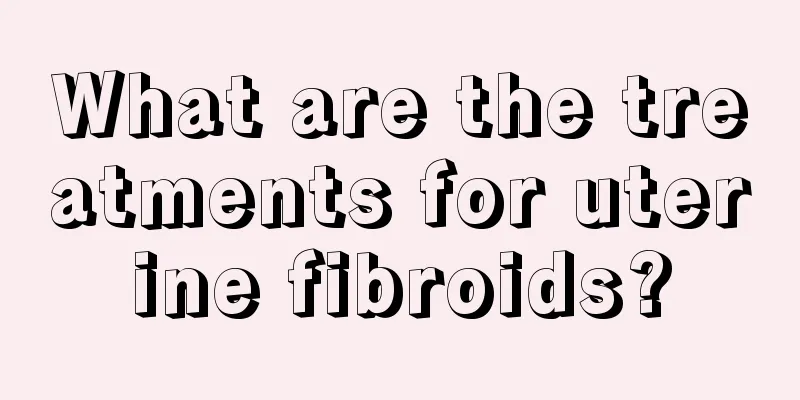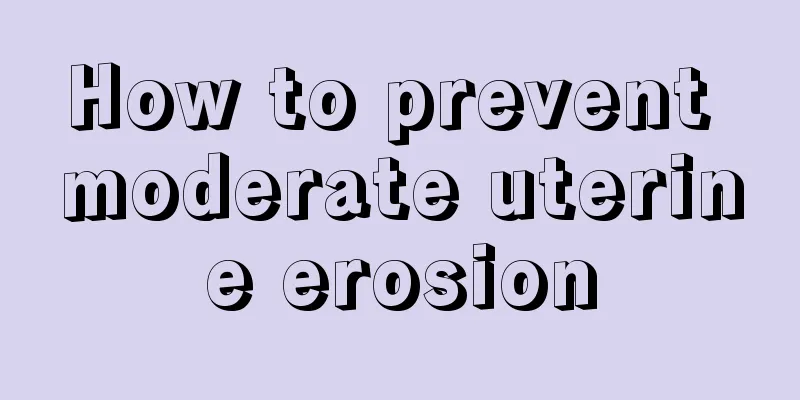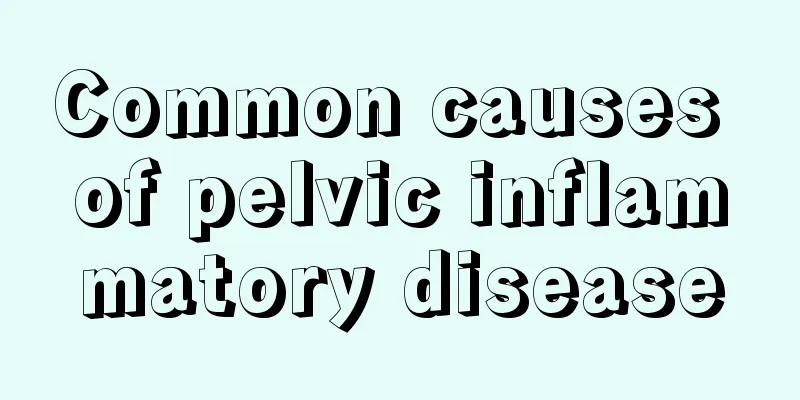What are the treatments for uterine fibroids?

|
Uterine fibroids often trouble many of our female friends. This disease is quite harmful. If not treated in time, the consequences may be disastrous. So what are the methods for treating uterine fibroids? Let’s take a look together below! 1. Conservative treatment Conservative treatment of uterine fibroids must meet the following conditions: first, the tumor does not exceed the size of a 6-week pregnancy; second, the patient is postmenopausal and asymptomatic; third, the patient is near menopause and can use non-surgical treatment to reduce bleeding; and fourth, the patient cannot tolerate surgery. Conservative treatment mainly includes expectant management and drug therapy. 1. Expectant treatment Suitable population: patients aged 40-50 years and above, who have begun to experience menopause and have no obvious clinical symptoms such as excessive bleeding and pain. Specific method: No drugs or other treatments are needed. Gynecological internal examination and B-ultrasound examination are performed every 3 months. If the tumor does not grow rapidly and the bleeding and pain symptoms do not worsen, we can expect the uterine fibroids to gradually shrink as age increases and sex hormone levels decrease. 2. Medication Advantages: Current conservative treatment is mainly based on drug therapy, which can avoid the pain and sequelae caused by surgery. Generally, if drug treatment is not ideal, minimally invasive or surgical treatment will be considered. Traditional Chinese medicine treatment: Use traditional Chinese medicine decoctions, Chinese patent medicines, etc. to regulate the endocrine system and microcirculation of female patients, regulate blood and qi, disperse blood stasis and resolve nodules, and eliminate uterine fibroids from the source. Western medicine treatment: androgen therapy. For women who are near menopause, have menstrual disorders, and have no malignant changes in the endometrium, methyltestosterone is often used for treatment. , the tumor compresses the nerves and causes radiating pain. 2. Surgical treatment Applicable population: Myoma size is equivalent to a pregnant uterus of more than one and a half months. In addition, if the fibroids grow rapidly, protrude into the abdominal cavity and tend to twist, they should also be surgically removed. Of course, other indications such as severe anemia, heart disease, and general condition should also be considered when deciding whether to undergo surgery. 1. Hysterectomy Applicable population: patients with large fibroids, severe symptoms, ineffective conservative treatment or malignant diseases. Advantages: This surgery completely removes the uterus and eliminates its symptoms. Disadvantages: The patient loses fertility and no longer has menstruation. 34% of women experience ovarian failure and menopausal symptoms within 2 years after surgery. Hysterectomy affects the integrity of the pelvic floor, shortens the vagina, and has a certain impact on sexual life. After hysterectomy, premature ovarian failure leads to decreased estrogen and increased cardiovascular morbidity. Patients are prone to adverse reactions such as obesity, hypertension, heart disease, and osteoporosis. Patients need 4-8 weeks to recover after surgery. 2. Hysteroscopy and laparoscopic myomectomy Advantages: small incision, less pelvic adhesion formation; fast postoperative recovery, most patients can walk and eat in the afternoon of the day of operation; less wound pain and postoperative fever, rarely need sedatives and analgesics; small and beautiful incision, in line with the aesthetic psychology of young people; shortened hospitalization time, generally can be discharged from the hospital 48 hours after surgery. After discharge, the incision on the abdominal wall needs to be kept dry, and bathing is prohibited after one week (tub bathing is prohibited). Because the sutures have just been removed when discharged, the wound has not healed completely, and the scab on the incision has not fallen off, so bathing is not advisable. Of course, the skin all over the body still needs to be kept clean by taking a bath, and washing the perineum every night or after defecation. Through the editor’s sharing above, have you gained a new understanding of the treatment methods for this disease? Then, in the future, you must do a good job in personal health care. When you find adverse symptoms, it is better to seek medical treatment in time. |
<<: What to do if you have severe gastrointestinal reactions in early pregnancy
>>: How long can sperm survive in a woman's body?
Recommend
Cesarean section uterine incision picture
Key reminder: With the development of medicine, m...
What is the reason for menstruation to come half a month early?
Women generally have their periods every month, a...
What are the specific manifestations of low back pain caused by gynecological inflammation?
Gynecological inflammation is the most terrible d...
What to do if the mother secretes too much milk
After giving birth, the mother secretes enough mi...
Medical Science | Be careful not to lose weight improperly and you may develop fatty liver
Has “fatty liver” appeared on your physical exami...
What are the disadvantages of smoking for girls?
Nowadays, more and more women are concerned about...
Where is the female urethra?
There is no doubt that both men and women have ur...
Does exercising before bed really help you sleep better? Do this if you want to sleep better →
"A lot of exercise before bedtime can help y...
What are the symptoms of cervicitis?
Various gynecological diseases require female fri...
Can I apply ointment if my vaginal opening is red and painful?
The female vagina is an external organ that is di...
What are the benefits of facial scraping beauty
The beauty of the face is particularly important ...
What cosmetics are suitable for you?
When choosing cosmetics, we should choose careful...
Four reasons for female anal swelling
There are many reasons for anal prolapse, but som...
The dangers of climbing stairs after childbirth
Some women hardly get out of bed or move around d...
Why do people have leg cramps? Timely massage can relieve cramps. To prevent leg cramps, drink more soy milk and milk
Leg cramps are indeed a major problem in people&#...









